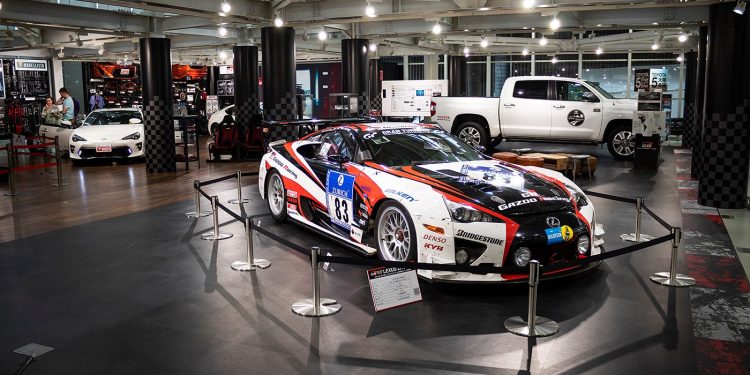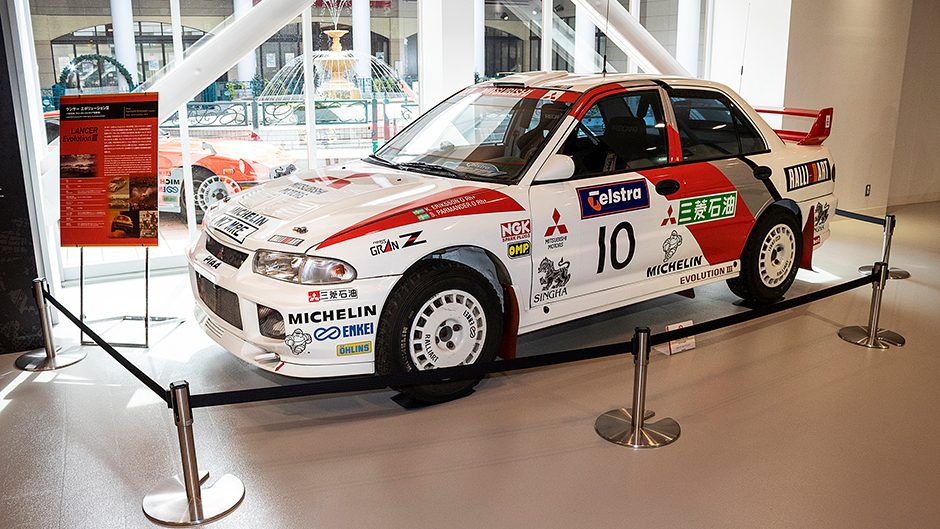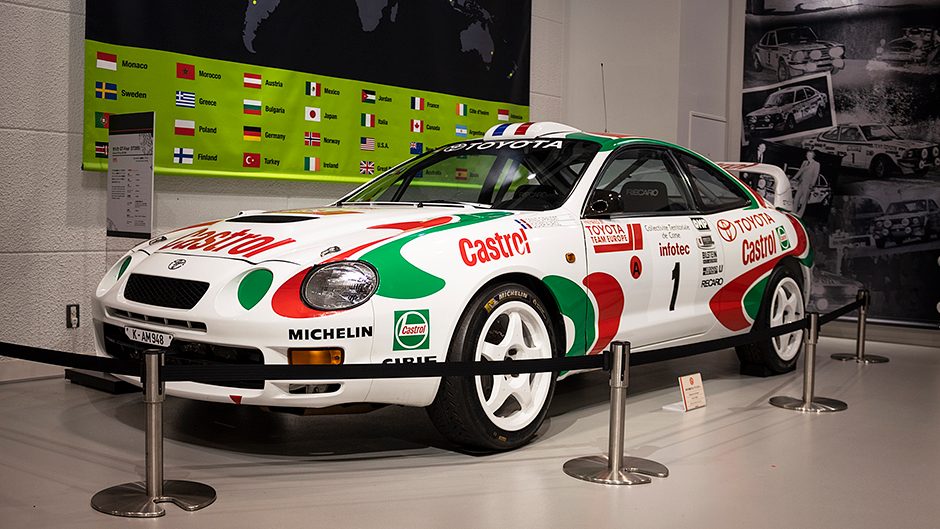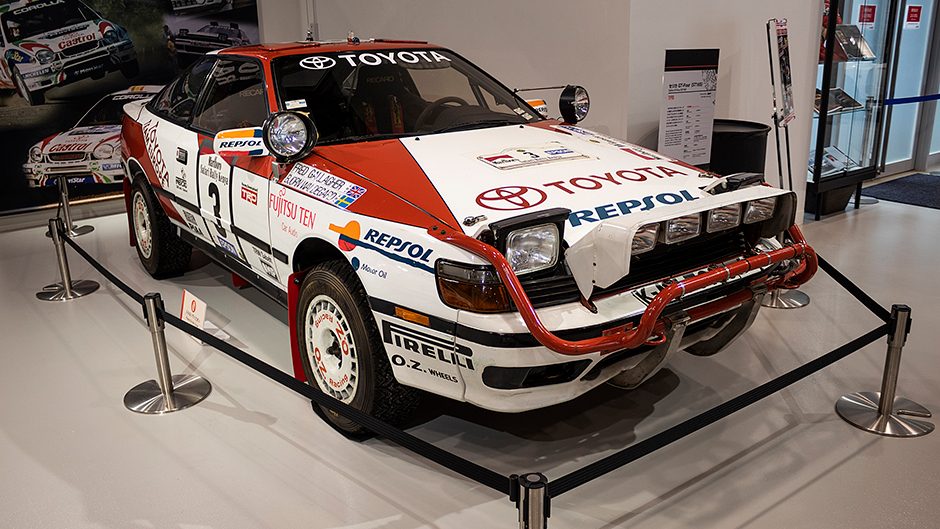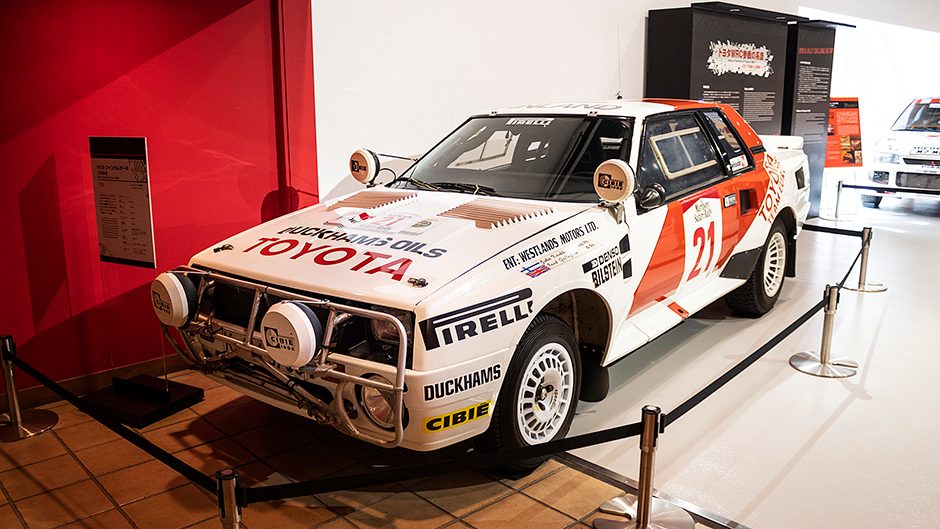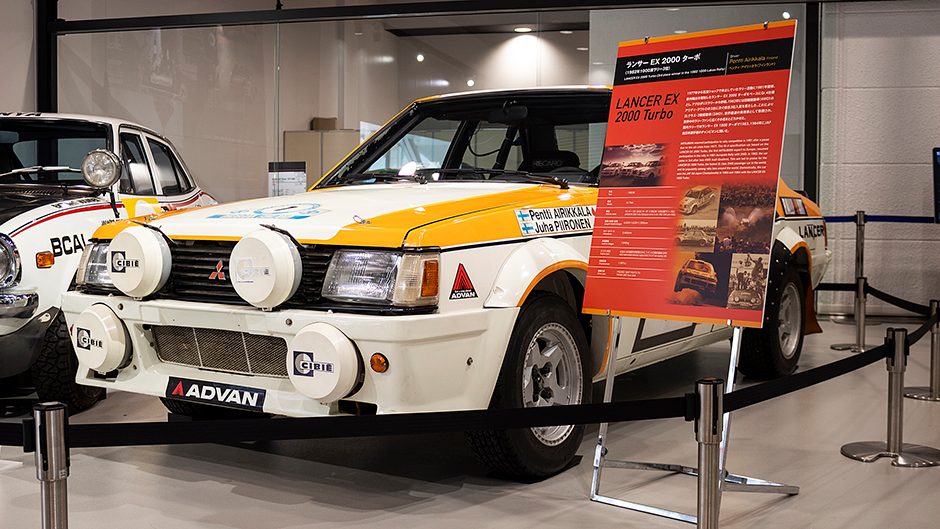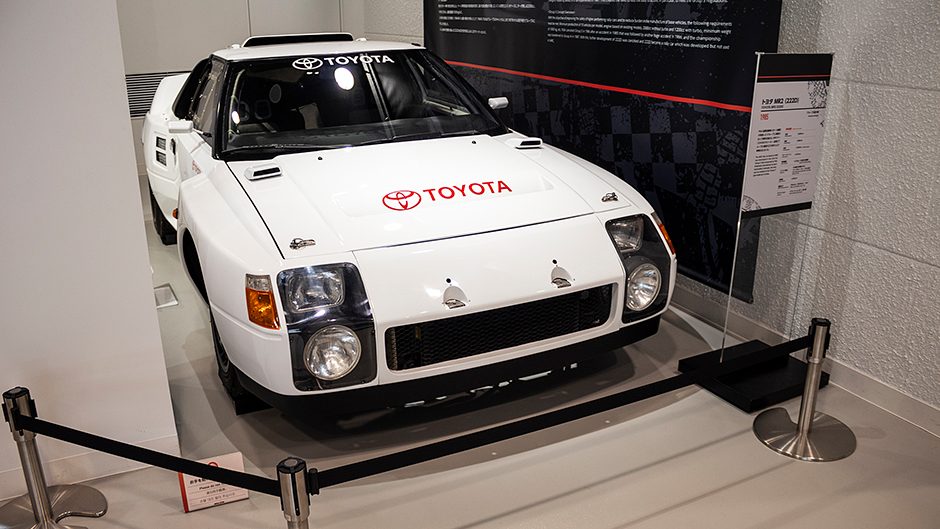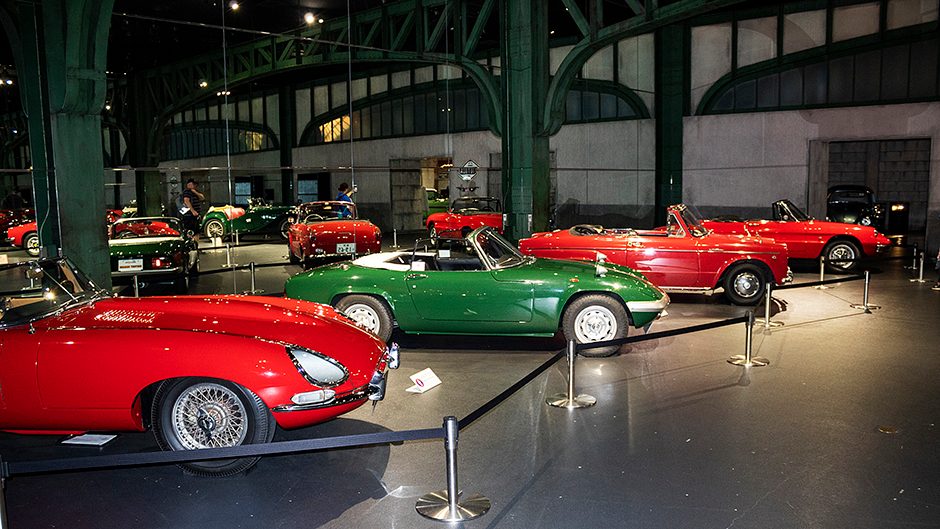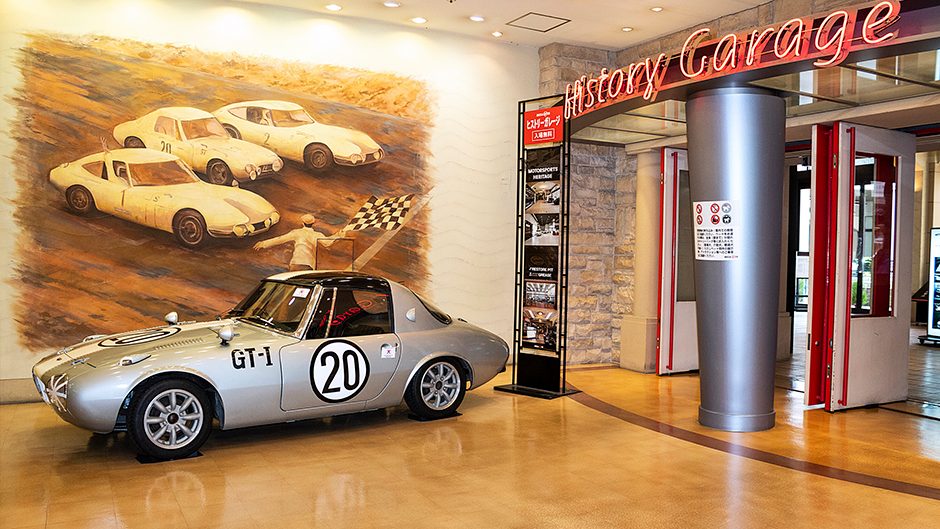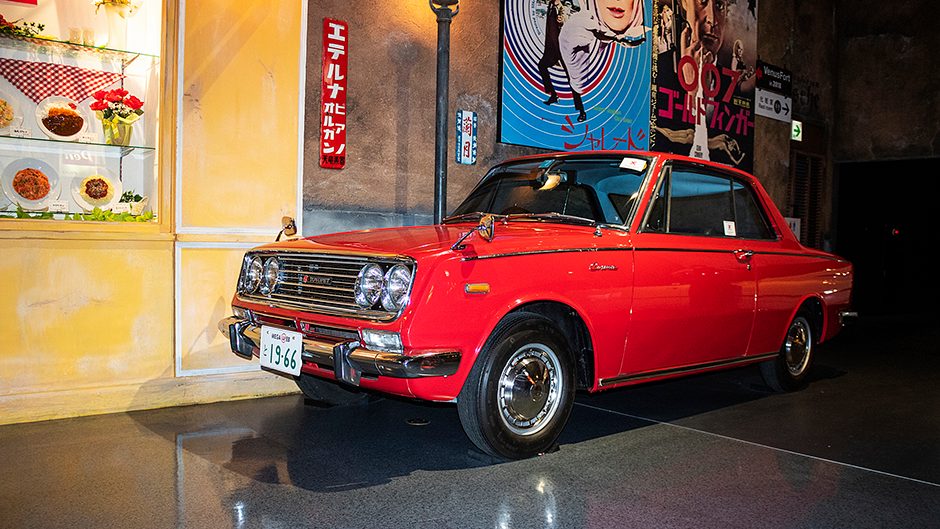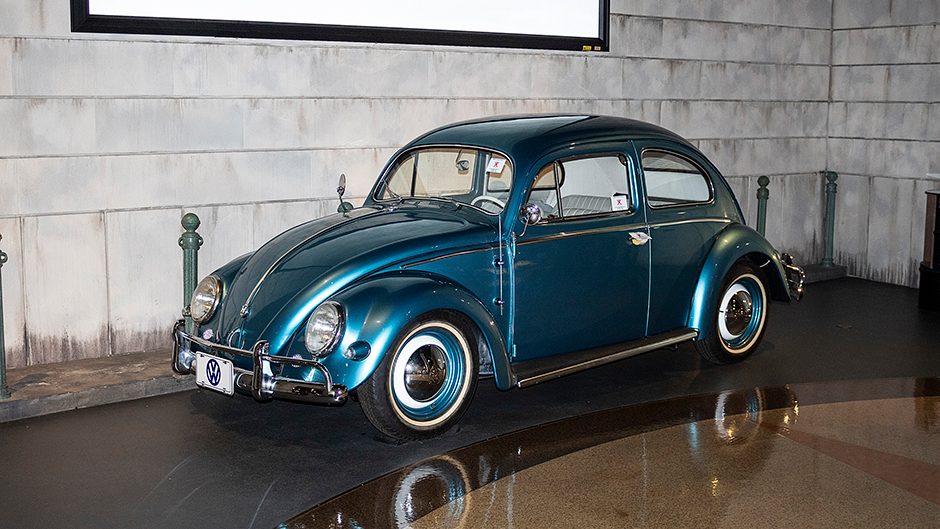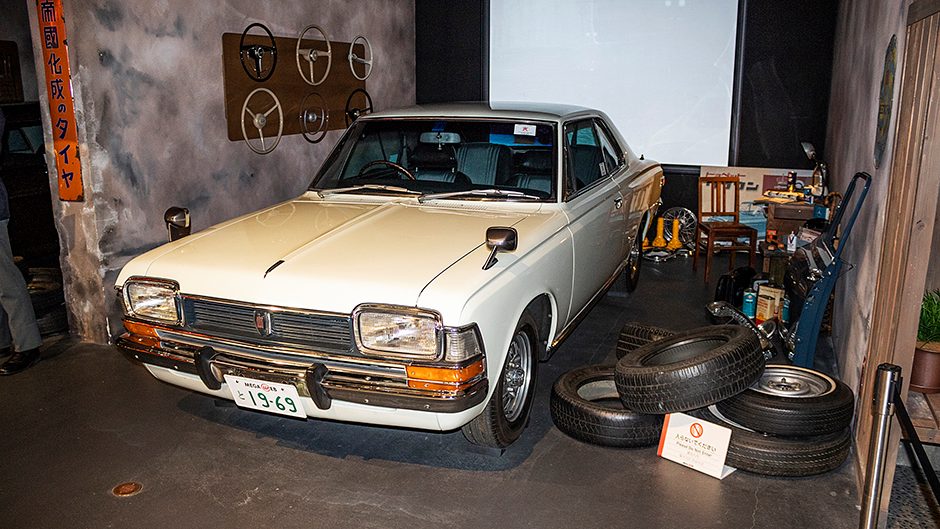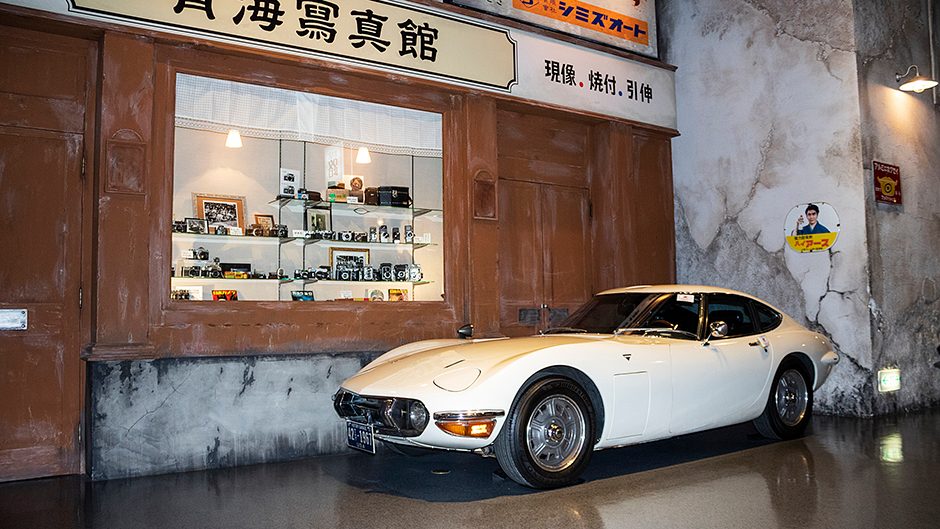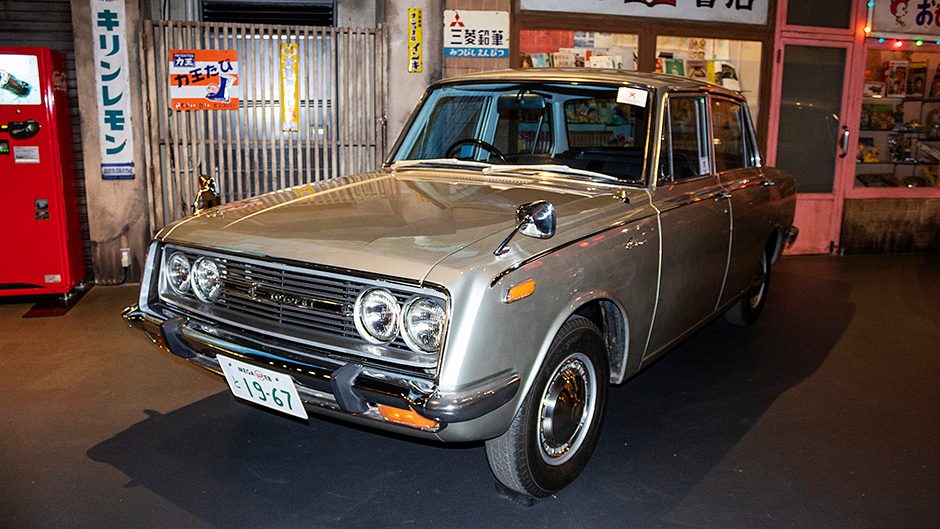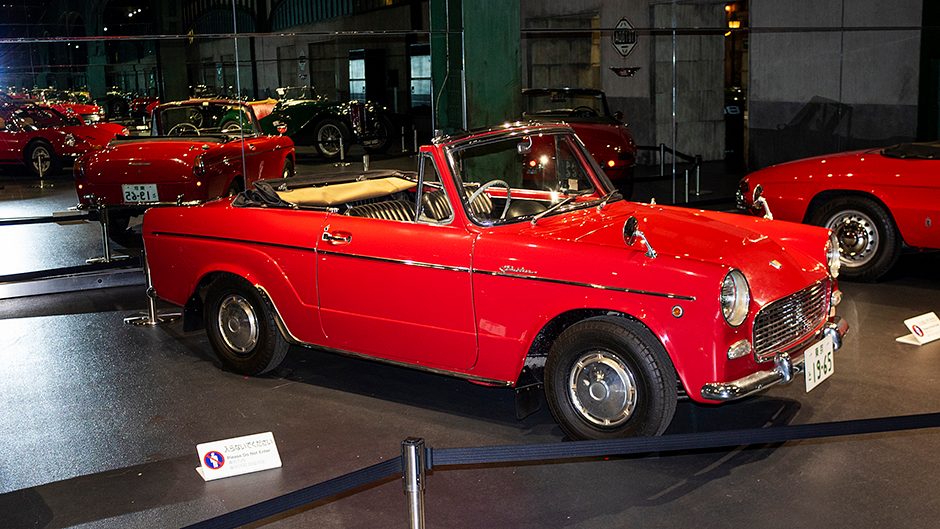Megaweb: Tokyo’s petrolhead heaven
Words Robert Barry | Photos RB
While in Tokyo, Robert Barry checked out the oddly named Megaweb complex, where Toyota stashes a great horde of cars from the past and present.
The MegaWeb complex in the up-market Odaiba retail area of Tokyo, is home to a Toyota-supported showcase of classic and historic WRC rally cars, as well as its current range of new cars and latest developments in automotive technology and mobility solutions. Comprising three theme-based areas being the “Toyota City Showcase”, “Ride Studio” and “History Garage” the facility is a petrol head’s heaven, particularly the latter, where significant vehicles from Toyota and other brands from the 1950s to the 1970s are displayed.
The History Garage features functionally working cars such as the rotary-powered Mazda Cosmo Sport L10B coupe pictured below against a backdrop facade reminiscent of the Tokyo city area in the 1960s era. It’s a fascinating collection of vehicles displayed, from the spunky wee 1965 Toyota Publica Convertible, to Toyotas that contested the World Rally Championship such like the 1995 ST205 Celica GT-Four.
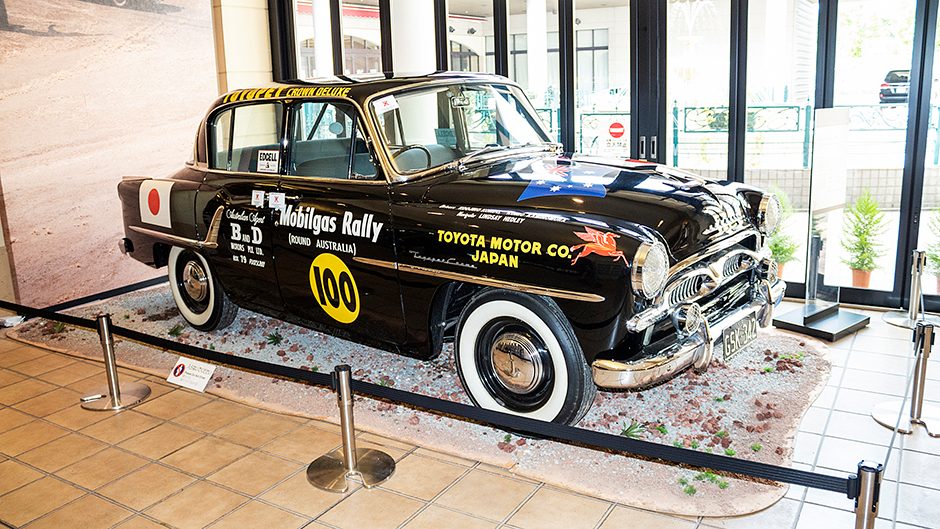
Toyota’s passion surrounding its motorsport heritage is clearly obvious as you tour the History Garage. This 1957 Toyopet Crown RSD is actually a replica of the factory-backed car that was entered in the 1957 Mobilgas Rally Round Australia. It is usually on permanent display at the Toyota Automobile Museum in Nagoya. Another curious addition to the collection which we found in a corner was a fully restored 1950’s Beetle with the small one-piece oval rear window.
The History Garage has its own fully-kitted out restoration area, where you can watch mechanics working on vehicles. Surrounded by an odd collection of wall-mounted steering wheels and a floor littered with spare wheels and tyres, an immaculately preserved 1969 Toyopet Crown MS51 hardtop coupe which is powered by a 2.0-litre six-cylinder engine, looked almost out of place within the exhibition corridor.
The History Garage also has a cafe and bar within the premises, appropriately called the Grease cafe & bar, and according to the guide it is modelled after the lounges that race car drivers used after a hard run on the course. It was obvious that the Japanese have not seen motorsport facilities in New Zealand.
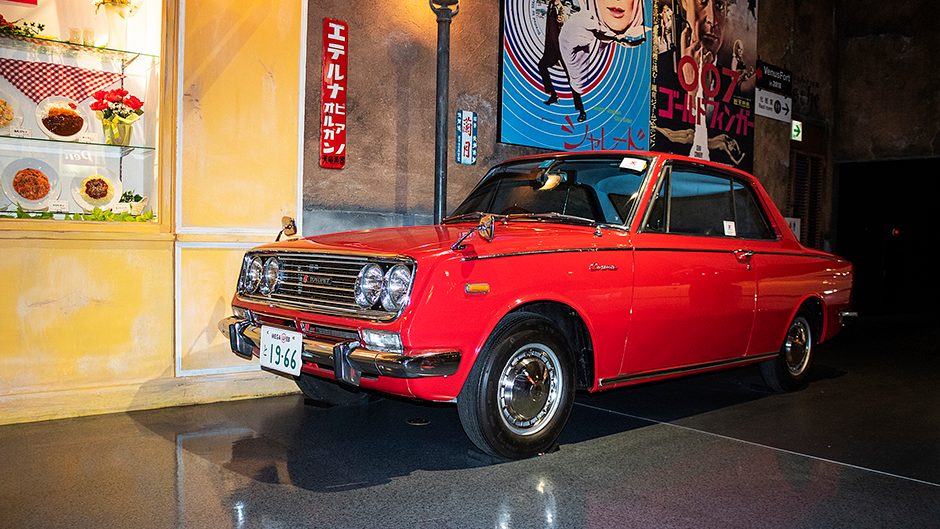
Adjacent to the restaurant was the Grease GPS souvenir shop which sold all types of diecast collectable models, ironically most of them sourced from France. The very pretty little Honda S600 roadster was the first production car that the brand sold to the mass market from 1964 to 1966, initially in right-hand drive for Japan but also in left-hand drive for export markets. Underneath the bonnet was a four-cylinder, 43kW, 606cc engine fuelled by four carburettors!
The S600 had a four-speed manual transmission and a top-speed of 140km/h. The roadster weighed 715kg and the coupe version was only 15kg heavier. The S600 only had a short production run but Honda produced more than 11,200 roadsters and 1,800 coupes in three years. It was superseded by the S800 in 1966. Wandering through the corridors of the History Garage is like taking a walk back through the Tokyo City area as it once used to look fifty years ago and this immaculate 1967 Toyota Corona Deluxe sedan sat perfectly within its unique setting.
The History Garage also houses a memorial lounge with unique figurines and photographs of historic cars and racing drivers, as well as other memorabilia. In addition literature and model cars from Japanese and overseas manufacturers are lined-up on a three-metre high shelf lining both sides of one corridor in the exhibition halls.
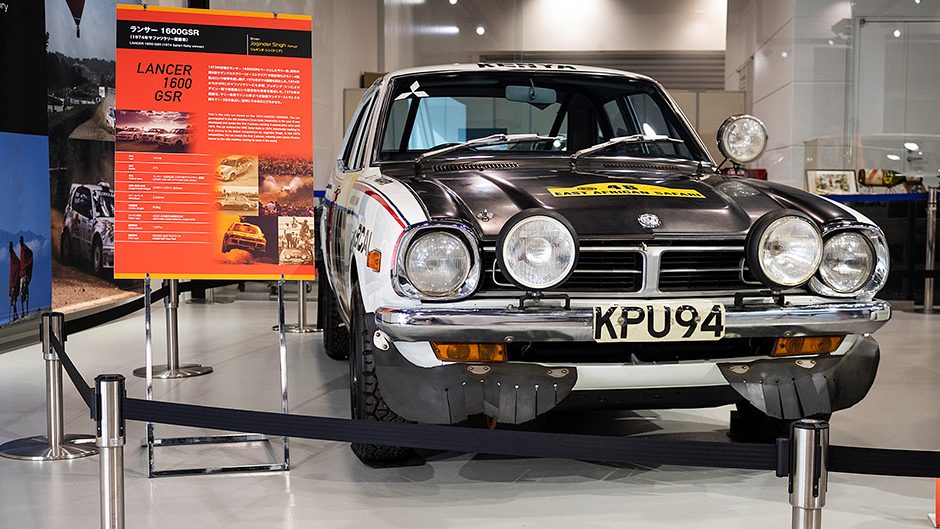
The white Toyota MR2-based rally car is the Toyota 222D developed for the stillborn Group S class which the former Federation Internationale du Sport Automobile (FISA) devised in 1984 for factory teams to enter into the 1987 World Rally Championship (WRC). Toyota developed the 222D by February 1985, by modifying the mid-engine rear-drive MR2 to accept the turbocharged 2.0-litre engine and all-wheel drive system from the forthcoming ST165 Celica GT-Four.
But many fatal crashes during the WRC Group B season in 1985, saw FISA decide to scrap Group S category and it introduced the stricter Group A regulations which saw Toyota regrettably abandon the 222D project. The History Garage features actual vehicles that were used by Toyota factory-supported rally teams such as the #3 1990 Celica ST-165 GT-Four, which was driven by the late Bjorn Waldegaard from Sweden.
His navigator was Briton Fred Gallagher. The GT-Four still wears the #3 race number from the 1990 Marlboro-sponsored Safari Rally held that year in Kenya which was won by the then 50-year-old Waldegaard. Waldegaard won the inaugural World Rally Championship (WRC) in a Ford Escort in 1976, but he then went on to claim 16 WRC titles for Toyota, the last being the 2011 East African Safari rally with his son Mathias seated next to him as navigator.
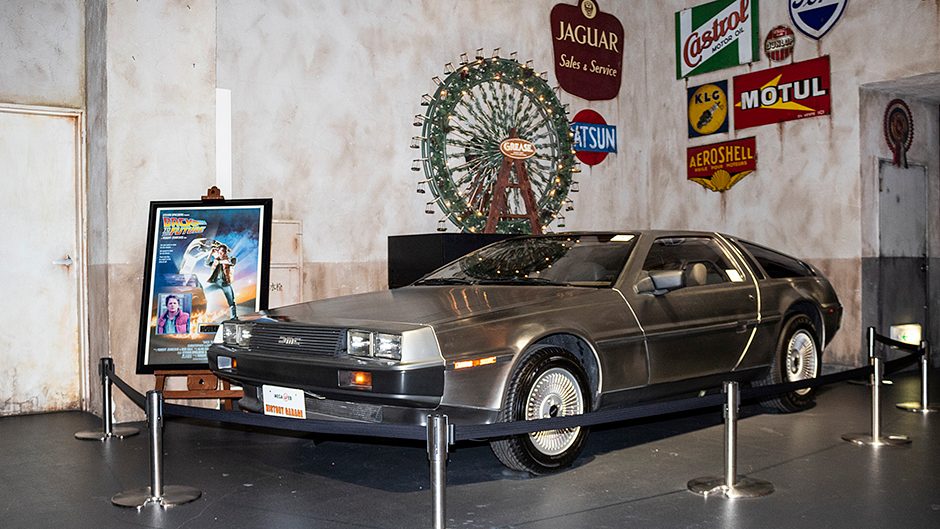
In status-driven Japan, the Corona was marketed through Toyopet stores, as it was the second model in Toyota’s product hierarchy sitting underneath the larger Crown sedan which was only sold through Toyota stores. This 1966 RT50 Toyopet Corona two-door Hardtop transported you back to a simpler era in Japan when cars like this were powered by 1.5-litre engines with a four-speed manual gearbox or a two-speed Toyoglide automatic.
The Toyopet Corona was also available as a four-door sedan, five-door station wagon, three-door van, five-door hatchback, and even a two-door ute! The History Garage also contained a few special Mitsubishi Rally Cars from the 1970s, 1980s and 1990s such as a 1995 Lancer GSR Evolution III. This Mitsubishi Ralliart car #10, registration M7 MRE, was the winner of the 1995 Telstra Rally Australia with Swede Kenneth Eriksson at the helm. It also won the same event in 1996 with the late Richard Burns at the wheel.
Didier Auriol took the same car to victory at the Rally Italy – San Remo in October 1996, but then Burns crashed out a month later in the Spanish event – Rally Catalunya. Another past blast was this 1982 Lancer EX Turbo powered by a 208kW 2.0-litre 4G63 engine. The car on display took third place in 1982 1000 Lakes Rally in Finland. Car #21 is the Group B rear-wheel-drive 1985 Toyota Celica twin cam turbo that Swede, Juha Kankkunen, drove for the Toyota Team Europe (TTE) WRC team, taking victory in the 1985 Safari Rally in Kenya. His TTE teammate, Bjorn Waldegaard, finished behind him in second place.
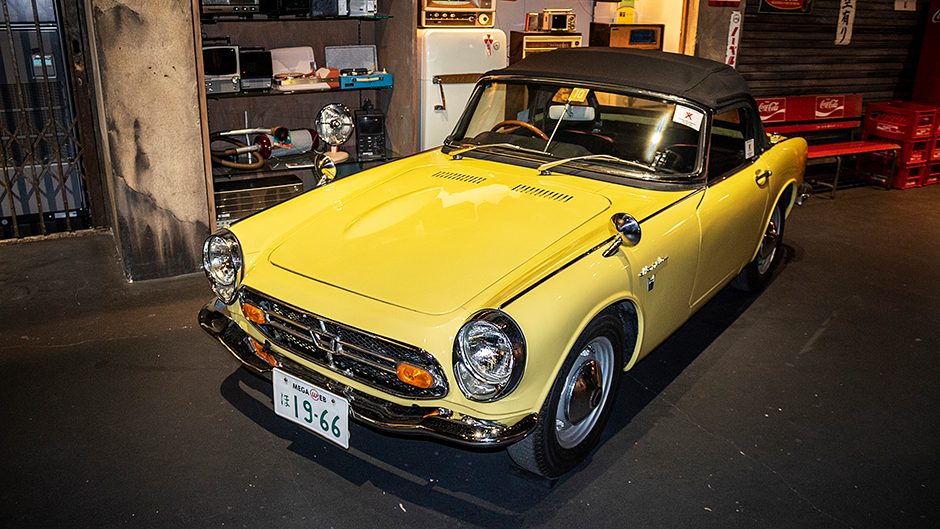
More than 71 cars started the 5000km four-day event but it was the second consecutive Safari Rally win for the 240kW TTE Celica cars, leading home 18 other competitors who survived the heavy rains and challenging muddy Kenyan roads that year. Kankkunen took the lead on the third leg and never looked back.
Another classic 1960s Toyota which is not well known in New Zealand is the Sport 800 coupe pictured here outside the entrance to the History Garage. Nicknamed “Yotahatchi” (Japanese short form for Toyota 8) the Sport 800 was powered by a 790cc two-cylinder boxer-engine fed by twin carburettors. It also had a lift-off roof panel (targa top) which could be stowed inside the boot. Kerb weight was 580kg thanks to the use of aluminium body panels as well as light steel in the unibody. More than 3000 Sport 800 cars were built between 1965 and 1969 by Toyota subcontractor Kanto Auto Works.
Tucked away in a corner was an instantly recognisable DeLorean DMC-12 coupe with its gullwing doors. More than 9000 cars were made in the Irish factory between 1981 and 1983 before production halted. But even more unusual than the DMC-12 is the Toyota 2000 GT, the brand first GT sports car which was a joint project with Yamaha that saw just 351 cars built between 1967 and 1970. All but two of the 2000 GT cars were fastbacks. Two roadster versions were built specially for the 1967 James Bond film, You Only Live Twice, so that six-foot-two Sean Connery could fit into the car.
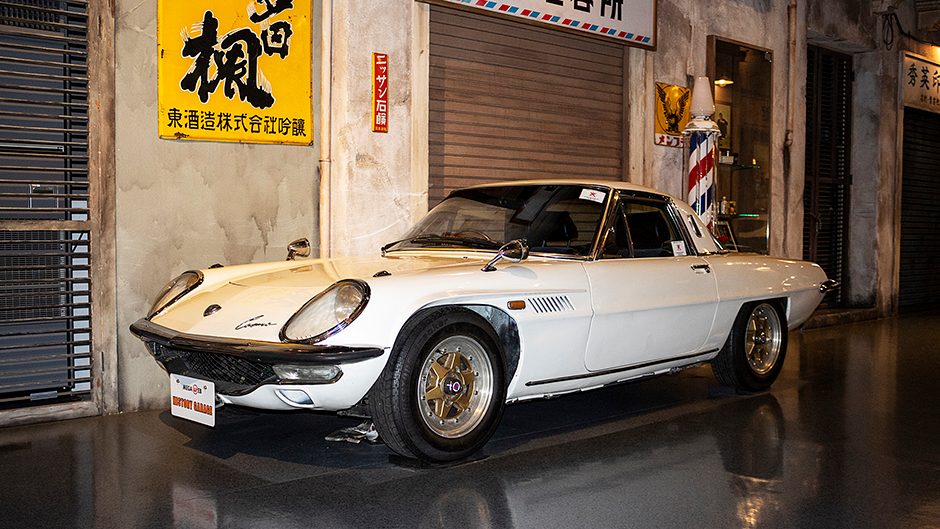
This 1976 Lancer 1600 GSR is the oldest of the three Mitsubishi rally cars on display in the motorsport section of the History Garage. It made its debut in 1973 when Mitsubishi decided to put the Lancer 1600 GSR into international rallying by entering a number of cars in the eighth running of the Australian Southern Cross rally.
Astonishing everybody, the Lancers proved tough, durable and capable, sweeping home from first to fourth place. But the Lancer 1600 GSR’s most famous win was in 1974 at the five-day long East African Safari Rally. Through some arduous conditions the little Mitsubishi sedan bested seasoned entrants from Porsche, Lancia, Peugeot and Nissan.


